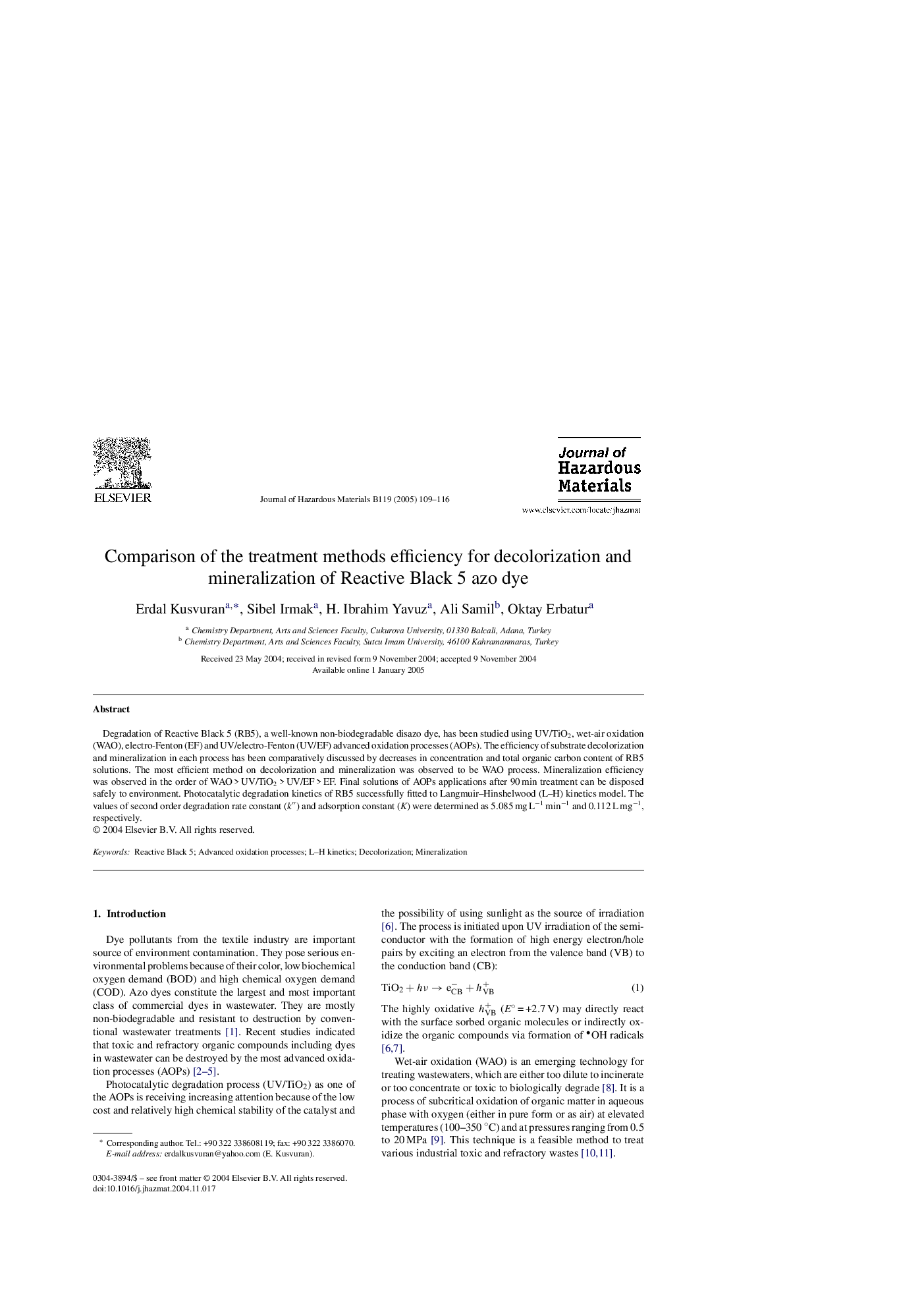| Article ID | Journal | Published Year | Pages | File Type |
|---|---|---|---|---|
| 9674347 | Journal of Hazardous Materials | 2005 | 8 Pages |
Abstract
Degradation of Reactive Black 5 (RB5), a well-known non-biodegradable disazo dye, has been studied using UV/TiO2, wet-air oxidation (WAO), electro-Fenton (EF) and UV/electro-Fenton (UV/EF) advanced oxidation processes (AOPs). The efficiency of substrate decolorization and mineralization in each process has been comparatively discussed by decreases in concentration and total organic carbon content of RB5 solutions. The most efficient method on decolorization and mineralization was observed to be WAO process. Mineralization efficiency was observed in the order of WAO > UV/TiO2 > UV/EF > EF. Final solutions of AOPs applications after 90 min treatment can be disposed safely to environment. Photocatalytic degradation kinetics of RB5 successfully fitted to Langmuir-Hinshelwood (L-H) kinetics model. The values of second order degradation rate constant (kâ²â²) and adsorption constant (K) were determined as 5.085 mg Lâ1 minâ1 and 0.112 L mgâ1, respectively.
Related Topics
Physical Sciences and Engineering
Chemical Engineering
Chemical Health and Safety
Authors
Erdal Kusvuran, Sibel Irmak, H. Ibrahim Yavuz, Ali Samil, Oktay Erbatur,
